CarbideTip
Aluminum
- Joined
- Sep 21, 2016
- Location
- Woking, Surrey, UK.
Follow along with the video below to see how to install our site as a web app on your home screen.
Note: This feature may not be available in some browsers.
I think it's there for a slow release of oil. Those ports are gravity drain. The string slows the flow and absorbs a little too slowly drip. It also reduces the volume of oil to fill the small sump but I'm not sure that's a reason for it being in there.Can anyone tell me what material I should be putting in here:
View attachment 370601
I've searched and seen cotton waste mentioned.
What is the function of this? Flow restriction?
Any help appreciated.
Martin.
What better than a product made to wick oil.Many times they put oil wicks in oil lines and over here in the states you can buy oil wicks from Hardware Stores. Oil wicks used for kerosene (paraffin) lamps. Old steam engines used oil wicks too. Also I have used the bigger tobacco pipe cleaners or the small ones twisted together and inserted in the holes.. Also we used white felt 1/4" thick cloth pad laid on top of all the pipes. For that many oil lines I would use the oil wicks. You need to clean those pipes out first as they look filthy. https://www.hobbylobby.com/Home-Decor-Frames/Candles-Fragrance/Candle-Accessories/Replacement-Oil-Lamp-Wicks---1-8"/p/37849 https://www.usplastic.com/catalog/item.aspx?itemid=123229&msclkid=ba7ba130845511271840c3dae8fd6ae8&utm_source=bing&utm_medium=cpc&utm_campaign=SB | Dynamic Search | RLSA&utm_term=usplastic&utm_content=All Webpages
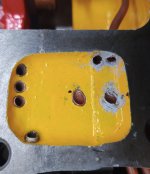
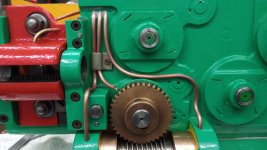


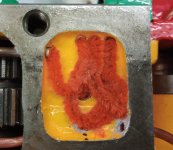

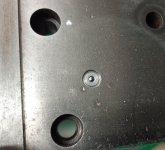

I think when monarch designed the lathes, they were expecting that they would run shift work in a production environment. Now many of these lathes are used less often. That reservoir gravity drains while the lathe sits. Add a ball oiler like Cal has on his or a small set screw to remove and fill that reservoir before every use.I think that would be interesting to know. If it takes 200 turns to get oil to the point that it's going to feed all the tubes, then you know that, for quick jobs, you need to pre-fill the reservoir via the oil fitting. I would have done it if I had thought that far ahead when I had mine apart.
Cal




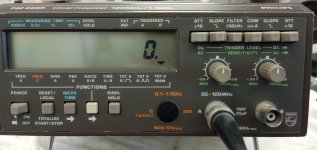


Wow! From that I conclude that any 10EE/CVS that's not in pretty regular use really should have a ball oiler added to jump-start the apron lubrication.Oil pocket capacity.....
...That’s 1452 revolutions.
...


Notice
This website or its third-party tools process personal data (e.g. browsing data or IP addresses) and use cookies or other identifiers, which are necessary for its functioning and required to achieve the purposes illustrated in the cookie policy. To learn more, please refer to the cookie policy. In case of sale of your personal information, you may opt out by sending us an email via our Contact Us page. To find out more about the categories of personal information collected and the purposes for which such information will be used, please refer to our privacy policy. You accept the use of cookies or other identifiers by closing or dismissing this notice, by scrolling this page, by clicking a link or button or by continuing to browse otherwise.
